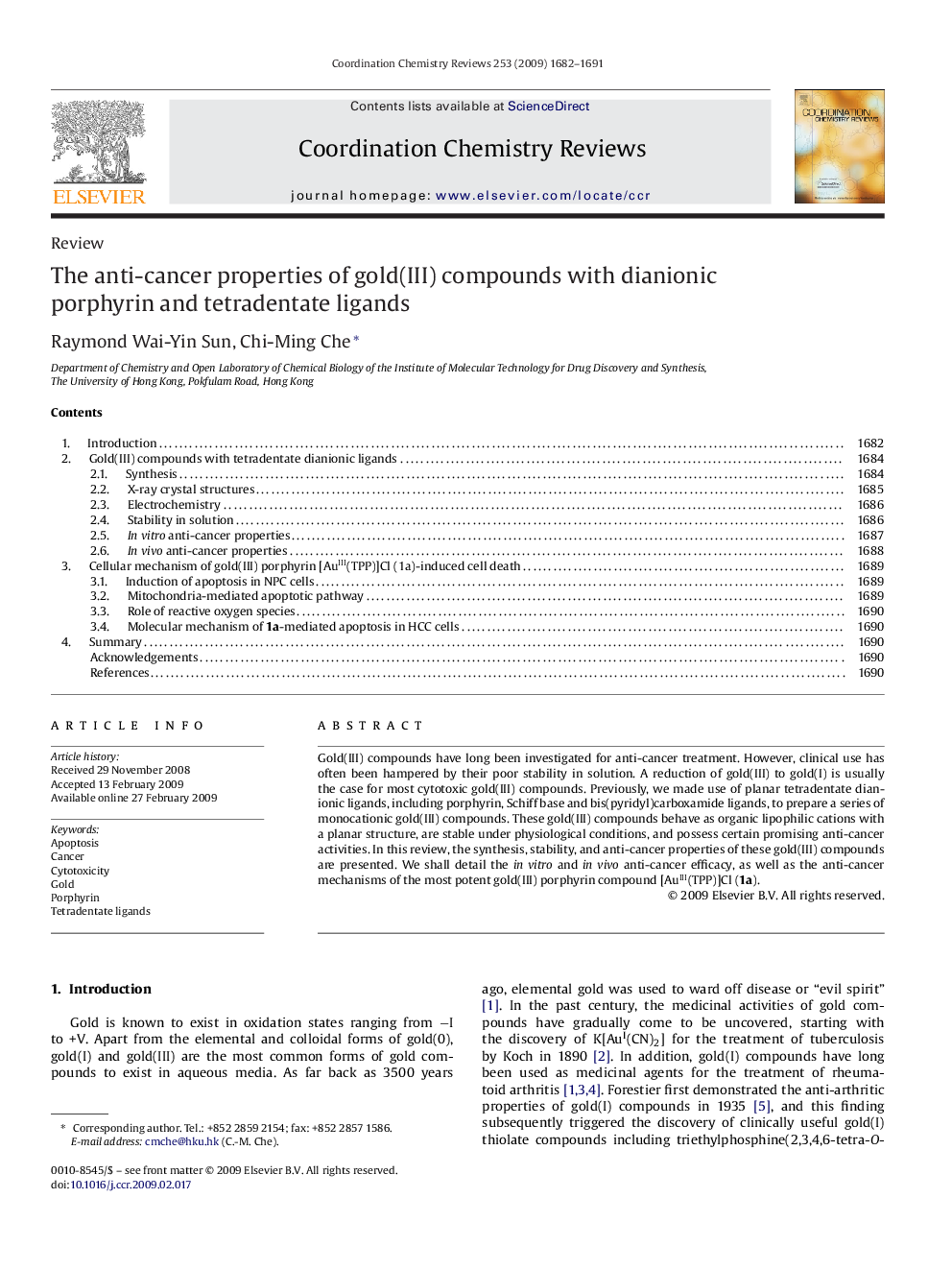| Article ID | Journal | Published Year | Pages | File Type |
|---|---|---|---|---|
| 1300372 | Coordination Chemistry Reviews | 2009 | 10 Pages |
Gold(III) compounds have long been investigated for anti-cancer treatment. However, clinical use has often been hampered by their poor stability in solution. A reduction of gold(III) to gold(I) is usually the case for most cytotoxic gold(III) compounds. Previously, we made use of planar tetradentate dianionic ligands, including porphyrin, Schiff base and bis(pyridyl)carboxamide ligands, to prepare a series of monocationic gold(III) compounds. These gold(III) compounds behave as organic lipophilic cations with a planar structure, are stable under physiological conditions, and possess certain promising anti-cancer activities. In this review, the synthesis, stability, and anti-cancer properties of these gold(III) compounds are presented. We shall detail the in vitro and in vivo anti-cancer efficacy, as well as the anti-cancer mechanisms of the most potent gold(III) porphyrin compound [AuIII(TPP)]Cl (1a).
